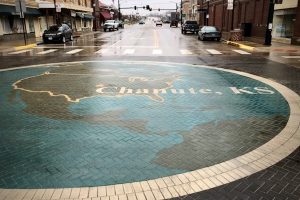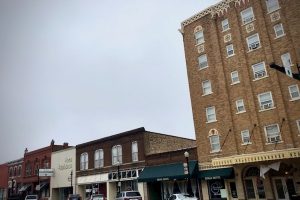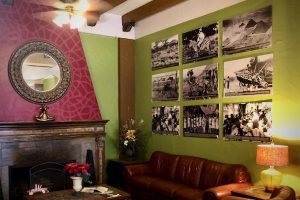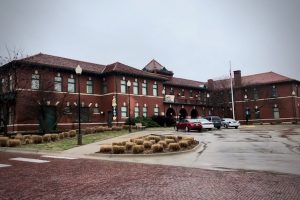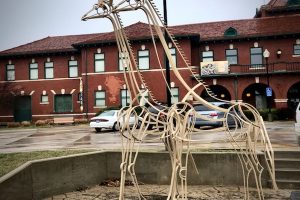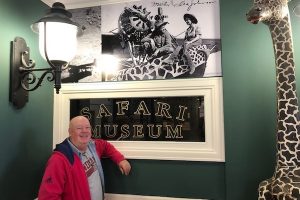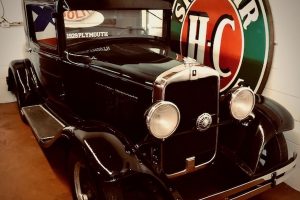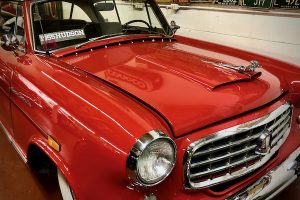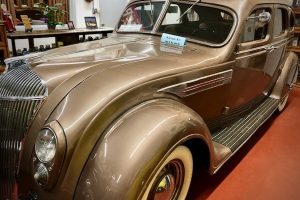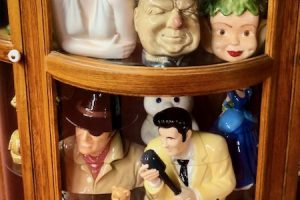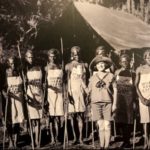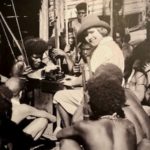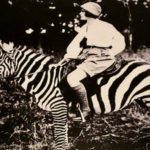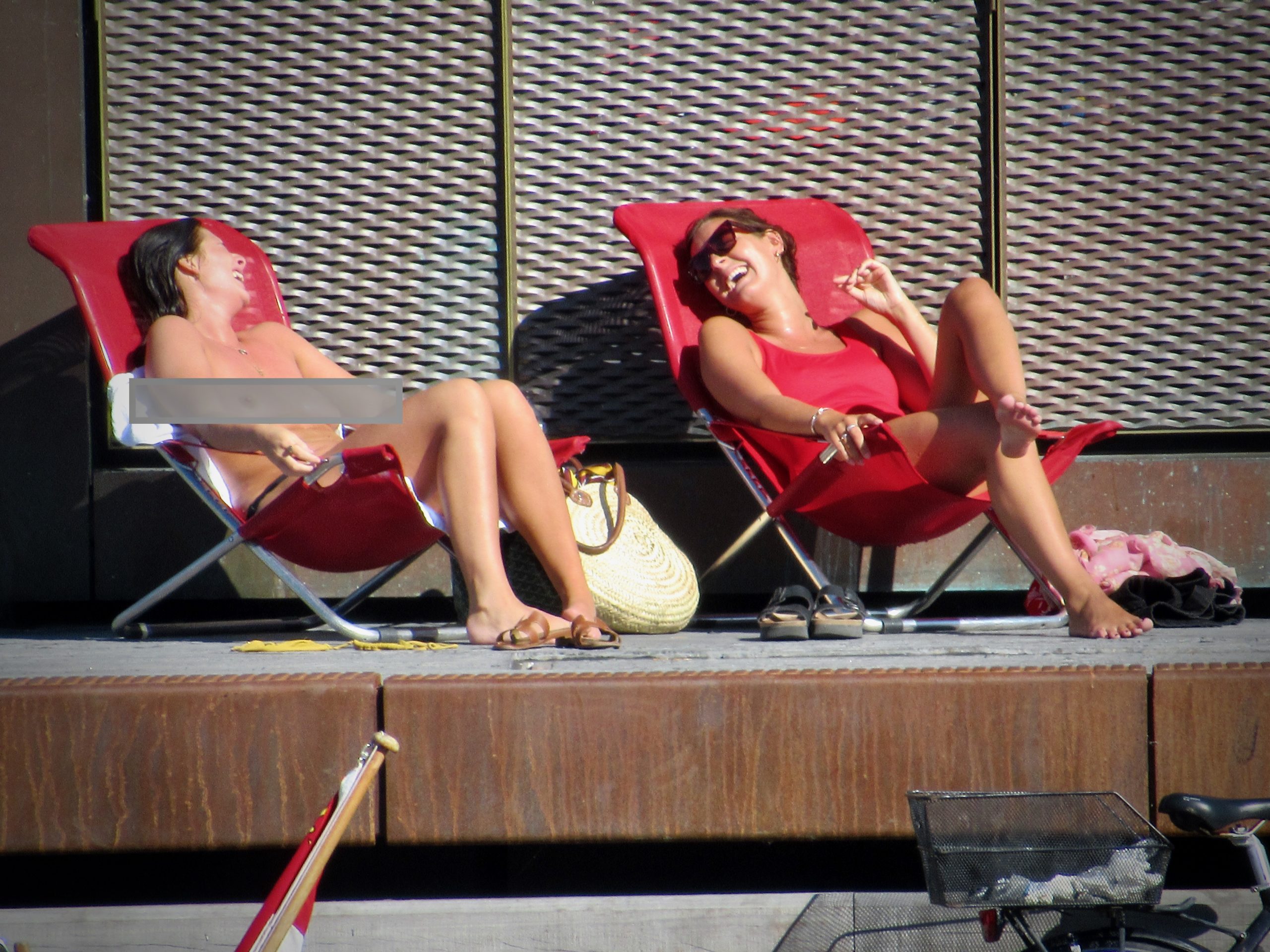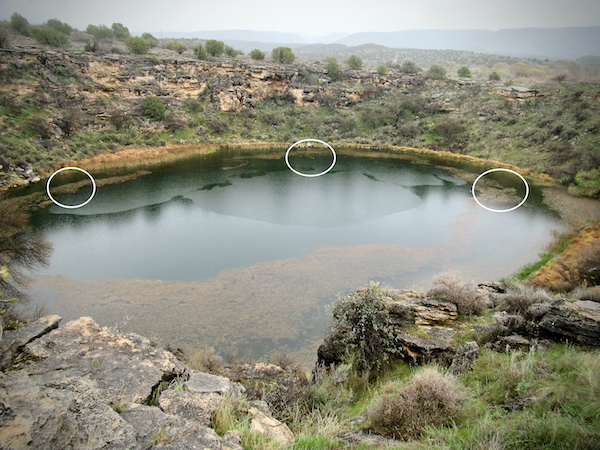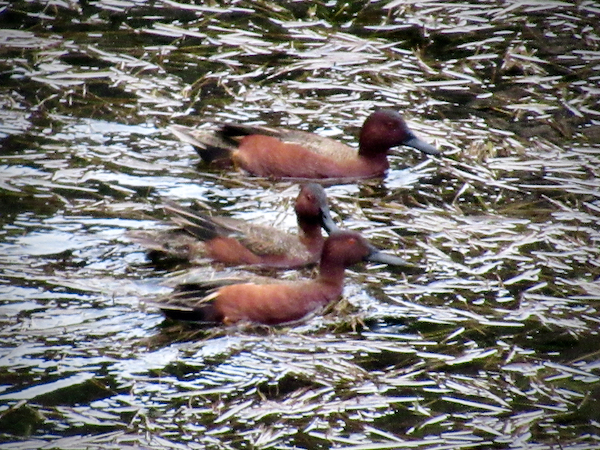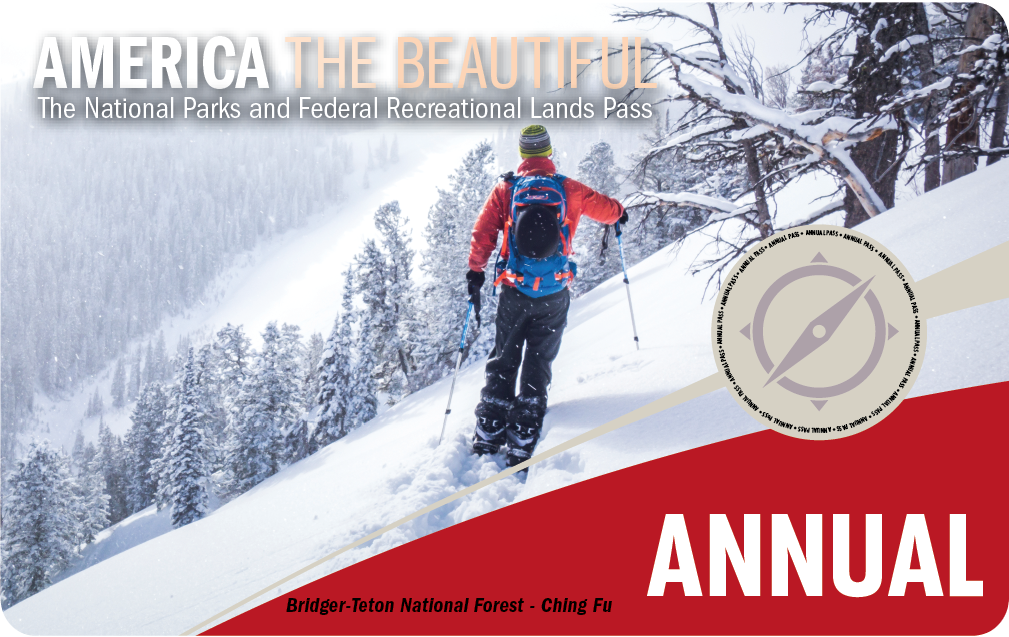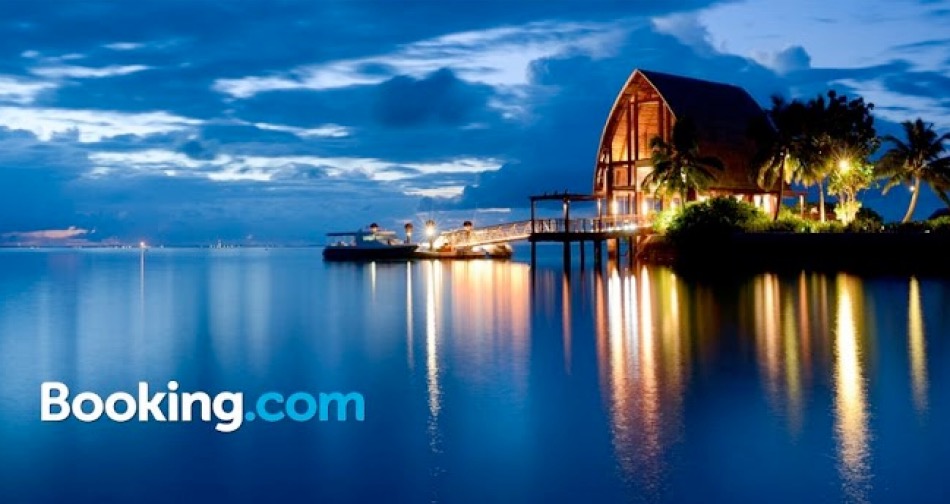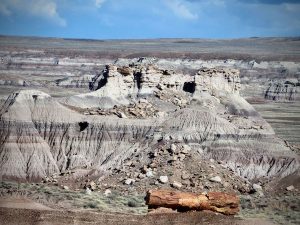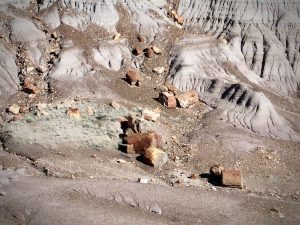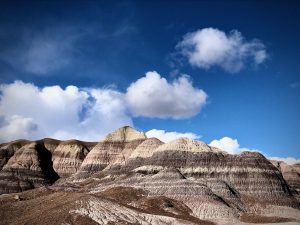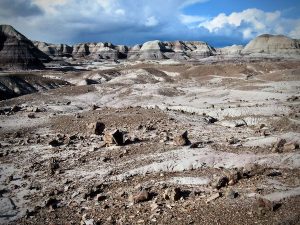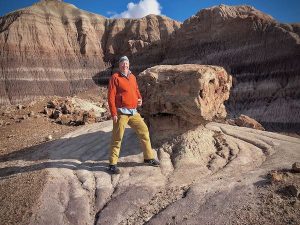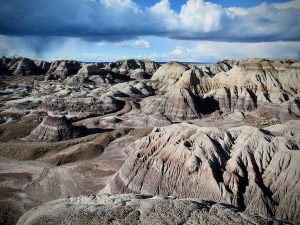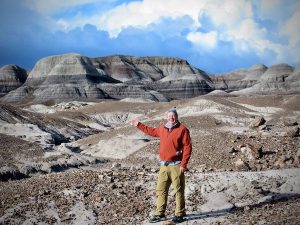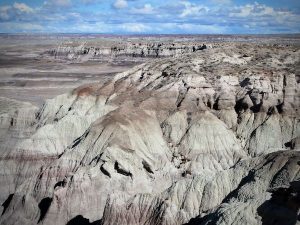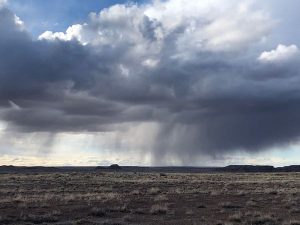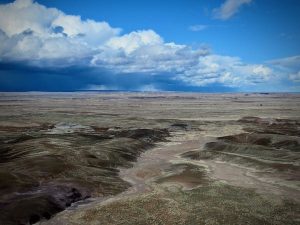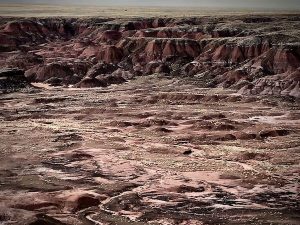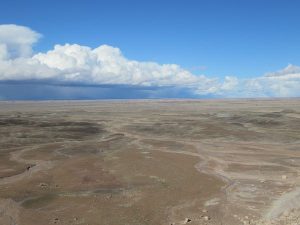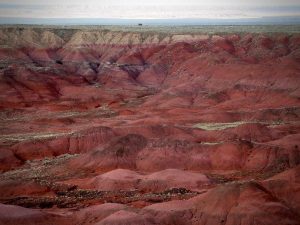Where’s the Funny? Newsletter
Volume 5: 3 March 2020
FEAR AND TRAVEL: Curiosity does not kill the (fraidy) cat
Paraphrasing the great U.S. President Franklin Delano Roosevelt, North Korean Dear Leader Kim Jong-il once said, “There is nothing to fear, but … starvation … and then your execution.” Or was it, “electrocution”?
No matter. The actual quote is, “… the only thing we have to fear is … fear itself,” which FDR said in this March 4, 1933, inaugural address, at the height of the Great Depression. That quote, and (most of) the nine others in the sidebar, all allude to The Unknown as the root cause of most fears.
Travel can be scary, too. And I don’t just mean being stuck in the middle seat on a 12-hour flight, between two Gigantosauruses and an inconsiderate millennial bro’ who decides to fully recline – just when you start to eat. I’m talking about the more abstract: The act of leaving the comfortable and the familiar in search of this unknown. People who don’t look or sound like me. Food that doesn’t taste or smell like mine (thankfully). Land and cityscapes that are exotic – or, in some cases, simply mundane.
Over the years, I’ve had my fair share of travel-induced terror. It was scary:
- To jump into a dilapidated wooden boat with a total stranger and head off into a flooded Amazonian jungle in search of the elusive Boto Falls – in the rain, with a rusty old coffee can to bail water.
- To wake up at a South Dakota KOA campground after a huge storm only to find a dead horse in front of our tent.
- To hear my dad yell “Never stand on the tailgate!” of our old Chevy station wagon before the family camping trip. (But it’s funny when he does and it falls off)
More recently, on a hike to the Lost Cabin in Organ Pipe Cactus National Monument, it was a bit disconcerting to walk alone for four miles into the desert with only an apple and two bottles of water. Well, OK, maybe that was just stupid.
But you know what? It’s OK to be afraid sometimes. Even singer Ray Parker Jr. was afraid of ghosts – as he explicitly stated in his double-negative signature phrase, “I ain’t afraid of no ghosts.” Whatever the situation, laughter really is the best medicine of all.

9 QUOTES:
“Keep your fears to yourself but share your courage with others.”
– Robert Louis Stevenson
“Nothing in life is to be feared, it is only to be understood. Now is the time to understand more, so that we may fear less.”
– Marie Curie
“Ignorance is the parent of fear.”
– Herman Melville
“Fear is an incompetent teacher.”
– Jean-Luc Picard
“The oldest and strongest emotion of mankind is fear, and the oldest and strongest kind of fear is fear of the unknown.”
– H.P. Lovecraft
“Fear is the main source of superstition, and one of the main sources of cruelty. To conquer fear is the beginning of wisdom.”
– Bertrand Russell
“Of all the liars in the world, sometimes the worst are our own fears.”
– Rudyard Kipling
“We are more often frightened than hurt; and we suffer more from imagination than from reality.”
– Seneca
“I think we’d all be better off if each country had its own planet.”
– Barney, The Simpsons
WHERE'S THE FUNNY? In Chanute, Kansas
I didn’t really want to go to Chanute. I am in Dodge City, and my goal is to make it the 310 miles to Pittsburg, Kansas, specifically to have dinner at Chicken Annie’s. But it’s Sunday, and I got a late start, due to my fascination with Festus and the TV show Gunsmoke exhibit at the Boot Hill Museum. If I had only skipped the $2.50 sarsaparilla soda at the re-creation of the Long Branch saloon, I could have made dinner before the 8 pm close.
Instead, now it’s 9 pm, foggy and raining on a two lane road with no shoulder in the heart of Kansas darkness. I’m still more than 100 miles away from Pittsburg, and I can barely keep my eyes open. My head is bobbing. And there’s a pickup truck on my tail, high beams blinding me in both mirrors. I’m going 10 MPH below the speed limit. Pass me, you stupid fuck! This is how people die.
No way I’m going to make it to Pittsburg. Not tonight. But I have a Plan B. Chanute is only 40 miles away. I pull over after the turn at the stop sign and let the ass pass. It’s way easier to follow little red taillights. I roll the window down. I gotta feel the cool night air. Wake up for this last stretch.
It’s 10:30 pm and I’m here, wherever that is. According to Booking.com, there are two hotels available: the Knights Inn and a Super 8. I’m not excited by either, but all I need to do is get some sleep. I pick the Super 8. There are 8×11 white paper signs all around, “No dirty boots.” The manager tells me there’s a cement plant nearby, and many of the workers like to stay here. It’s all starting to come together.
Monday is a new day. I’m having a big breakfast at the Grain Bin. I need diner food. It’s raining again, and the only reason for me to be in Chanute is the Safari Museum, which of course is closed on Mondays. I am tempted to drive to Pittsburg for lunch at Chicken Annie’s, but it’s usually only open from 4 pm to 8 pm, and it too is closed Mondays.
I’ll walk around and take a few pics, check out the old hotel and train depot. Forty-five minutes max and then I’ll hit the road. I walk a block down Main Street to the corner. There’s a dinosaur across the street and several old gas station signs at a generic building that just says “Auto Service Center.” My friend in Chicago, Norbert, collects old gas station signs. Maybe they know Norbert? I see a man through the door window. The door is locked but he waves me around.
What have I walked into? There’s room after room of immaculately restored classic cars. I am not a car guy, but you can not help but to marvel at the beauty of these vintage machines. A woman emerges from the back. It’s Lucille Ogle and I have stumbled into Howard’s Toys for Big Boys museum. Lucille has worked for businessman and classic car collector Howard Alger for more than 40 years. Alger, who owned the Denison Welding Supply shops in Chanute and Fredonia, Kansas, until 2016, has 43 cars, with about 20 on display. There is no charge to see the collection, which includes a rare 1925 Cadillac, serial no. 1, which means it’s the first one produced. And, if cars aren’t your thing, Alger’s wife collects iconic cookie jars (173), oil lamps and rolling pins – all on display upstairs.
Now that I am an hour behind schedule (it’s still 300+ miles to my next stop in Eureka, Missouri), I continue through the rain to the intersection of Main Street and Lincoln Avenue, where there is a mural of a world globe with a map of the United States and “Chanute, KS” as the centerpiece.
This isn’t just some random piece of art. Chanute is home of Google software engineer Dan Webb, so he made this town of 9,000 the absolute center of the 3D mapping program Google Earth – for Mac computers only. FYI, Lawrence, Kansas, is the center for all PCs.
This stop is getting more interesting by the minute, so I drop into the lobby of the former Tioga Hotel (so say the awnings), which now operates as the Walsh Hotel. There is a fire burning in the lobby fireplace, with nary a soul in sight – which is sort of ironic since in 1929 this was one of the first fireproof structures built in Kansas.
On the walls were jumbo size black and white photos of Osa and Martin Johnson (see sidebar), the couple whose worldwide exploits are chronicled in the nearby Safari Museum, which of course also is not open on Mondays.
But I go to the train depot anyway, because it’s also an historic building that now houses not only the Safari Museum, but also the Chanute Public Library. Built in 1903 in a “Richardsonian-Romanesque” style, according to the Kansas Historical Society, this was southern headquarters for the Atchison, Topeka & Santa Fe Railway company (AT&SF) and home to a Harvey Girl-laden Harvey House, a popular chain of restaurants and hotels for passengers headed west. In its heyday, up to 10 trains passed through the Chanute depot each day. But today, it’s just me and my minivan.
MEET OSA AND MARTIN JOHNSON: Pioneer travel "influencers"
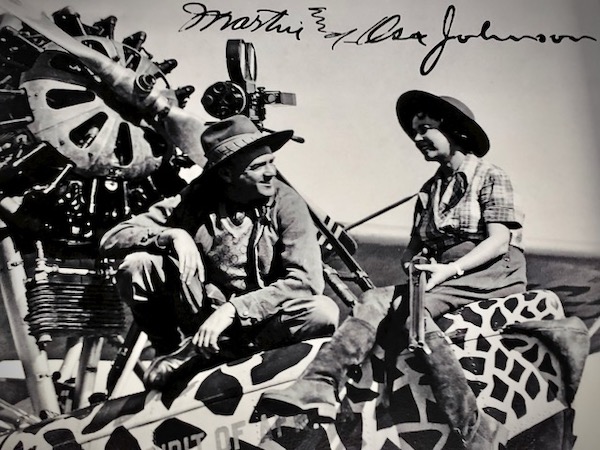
Just after her 16th birthday in May 1910, Osa Leighty of Chanute would marry Martin Johnson – almost 10 years her senior – of Lawrence, Kansas. They had met at one of Johnson’s travelogues, as he had only recently returned from two years on the high seas with novelist Jack London on his boat, the Snark.
For the next 27 years, the couple would travel the globe, sharing their adventures from unknown lands via documentary and feature films, photographs and writing. From 1917 to 1920, they explored the South Pacific, from Vanuatu (then called New Hebrides) to the Solomon Islands to Borneo.
From 1921 through 1931, they took four safaris through what was then the Belgian Congo, Kenya and the Nile. In 1932, they learned to fly their own planes. They made a movie, Congorilla, which was the first talkie authentically shot in Africa.
In 1933 and 1934, they traveled the length of Africa, becoming the first pilots to fly over Mount Kilimanjaro. Their 1935 film, Baboona, was the first movie shown on a commercial plane. That’s the year they also became the first couple featured on a box of Wheaties cereal.
Indeed, this couple knew how to market themselves. They traveled on what we would today call a “backpacker’s budget,” so they sought the financial support of sponsors such as Eastman Kodak, Maxwell House Coffee, The Coleman Co., Coca Cola, Colegate, Shell Oil and the Eveready Battery Co.
As a precursor to today’s generation of travel “influencers” (see The Blonde Abroad, for example), the Johnsons would mention sponsors in their interviews and even shamelessly dress up the local tribespeople to achieve their product placements (see the Maxwell House Coffee photo).
Tragically, Martin died in a 1937 plane crash in California. Osa was injured in the crash but survived, going on to write the best-selling book of 1940, “I Married Adventure” and later producing 26 half-hour episodes of a TV show, The Big Game Hunt (1952), using much of their own footage.
She died of a heart attack in 1953, but while she and Martin were married – boy did this couple live!
LISTICLES: 10 things ...
... from a long, long 4,983 mile, 30-day road trip
- Off I-40 near Houck, Arizona, Fort Courage, a cheesy, dilapidated former Route 66 tourist trap loosely based on the TV show F Troop, is for sale. Great terms available.
- Many young men in New Mexico really do look like the cons featured on the TV show Breaking Bad – at least the ones I saw late night around the Buffalo Wild Wings bar in Albuquerque did. Better call Saul.
- It only takes a single truck full of oranges to stop I-40 traffic east of Flagstaff for more than one hour. Maybe it was the flames.
- Even at 40 degrees on a typical February weekend morning, if the sun is out don’t be surprised to see at least a dozen colorful hot air balloons up in the clear blue Albuquerque sky. I’m definitely the one on the ground, looking up.
- Your typical wagon train, like the ones along the Santa Fe Trail (aka the Great Prairie Highway established in 1821 from Franklin, Missouri, to Santa Fe, New Mexico), could travel eight to 10 miles per day. I like to drive, but oxen? No thank you.
- The pronghorn, like the dozens I saw at Fort Union in New Mexico, is the second fastest mammal on the planet next to the cheetah. With the demise of the Mexican gray wolf, adult pronghorns don’t really have predators. And don’t call it “antelope.” It doesn’t like that.
- Stratford is the (dead, presumably) Pheasant Capital of Texas and home to the much more formidable Elks and Lady Elks of Stratford High School.
- Raised in Clayton, New Mexico, Charmayne James and her horse Scamper won 10 consecutive World Barrel Racing Championships from 1984 to 1993. No offense to Oklahoma’s Ree Drummond, who makes a mean patty melt for her family and ranch hands, but James is the real pioneer woman.
- Built in 1887 with a diameter of 32 feet, the 109-foot deep Big Well in Greensburg, Kansas, claims to be the world’s largest hand-dug well. The title may need to be downsized to “largest in the United States” as the Well of Joseph (280 feet) in the Cairo Citadel and the Pozzo di S. Patrizio (200 feet) in Orvieto, Italy, are both larger, according to Wikipedia.
- On June 29, 1541, Spanish explorer (who left New Spain / Mexico in 1540) Francisco Vasquez de Coronado crossed the Arkansas River near Dodge City, Kansas, where a 38-foot concrete Coronado Cross tribute was erected in 1975.
... from a short time in Arizona
- Arizonans like to back their vehicles – usually white pickup trucks – into parking spots. And that doesn’t mean they are any better staying between the lines.
- The endangered Sonoyta pupfish found at Quitobaquito springs and pond in Organ Pipe Cactus National Monument, is a subspecies of the ones found in Death Valley. Neither will lick your face when held.
- A typical Chicago Cubs fan in Mesa, Arizona, is just as obnoxious as one at home in Chicago. For example, you probably should not brag about owning season tickets to Spring Training games. “The Cubs beat the Athletics 12-2!” It’s February. No one cares.
- The 2-mile addition to the highly publicized wall along the Mexican border south of Organ Pipe Cactus National Monument will be 30 feet tall with six feet of concrete below the surface – to which former Mexican President Enrique Peña Nieto reportedly said, “Show me a 30 foot wall and I’ll show you a Mexican on the other side selling a 32-foot ladder.”
- With a minimum of 7,000 deaths recorded in the vast Sonoran desert (and that’s only the bodies they found) in the past 20 years, most people I met in Arizona say they want a wall. This sentiment is strongest around the small towns of Why and Ajo, where nearby hundreds of U.S. Border Patrol agents have a base. If your favorite car colors are green and white, these are the towns for you.
- The typical Scottsdale male tourist at 8 am in February is over 40, in a pack of four, hungover at a hotel breakfast bar, late for tee time, but too early for the casino where he fell in love with the waitress last night. This is just my best guess.
- Most of stunning Sedona starts to shut down around 9 pm, which is great for hikers –.and hydration – but bad if you’re looking for an after dinner drink.
- When Sedona and the rest of the world re-opens, try to get a reservation at the Elote Cafe, consistently ranked as one of the U.S.’s top Mexican restaurants. Does that even make sense?
- The vicious Sonoran desert “jumping cactus” (aka the chain fruit cholla) doesn’t really jump – it’s thorns have tiny hooks at the end that latch onto whatever touches them. And I know this how?
- There’s a really good reason people wear boots and not old, thin rubber soled New Balance running shoes when hiking in the desert. See No. 9 above.
IN PRACTICUM
ZOOM, ZOOM: Why I still bother to carry a real camera
For the first picture, I could have picked a cute little monkey on top of a faraway Kruger National Park hilltop, but what’s the fun in that? The Danish bathing beauties are way, way, way (sad but true) across the Yderhavnen in Copenhagen. I captured the summer moment with a Canon PowerShot SX620 and its 25x optical zoom lens.
I hate to carry bulky, heavy camera equipment, so when I travel, I always take what I believe to be the best pocket-size product with the most powerful zoom. For me, that has been the Canon PowerShot SX series. My first was the SX 230, which I bought in early 2010 specifically to go on safari while at the FIFA World Cup in South Africa.
The goals was to be able to capture (in pictures) the animals I undoubtedly would see on safari. Confined to one of those modified, open air Jeep land cruisers, I had no idea how far away (or close) the animals would be. With the SX 230’s 12.1 megapixels (MP) and 14x zoom – tops on the compact market at the time – I would be prepared either way.
This Canon earned its keep until 2016, when I moved up to the 20.2 MP, 25x zoom SX 620. An SX 730 was available, but I like to stay a few models behind. I’m by no means an early adapter, which means I don’t want to overpay for the latest – and often unproven – technology.
I’m also trying to stick to a $250 to $350 price point, as anything higher takes you into the $400+ DSLR market, which is completely different – and won’t fit into my shirt pocket. Canon currently offers the 20.2 MP, 40x zoom, 4K video SX 740 for around $349 to $399.
Why do I want that powerful zoom? Take a look at the next two photos from Montezuma Well in Arizona. While you can’t see the amazing, yet still creepy Motobdella montezuma leeches (PDF) and water scorpions that lurk beneath the surface, you also can not make out the small birds diving into the water or the ducks (in the three white circles) swimming along the top.
The zoom allows me to take a decent enough image (see last photo), so that when I show it to the volunteer park ranger on duty, she can identify them as cinnamon teals. She also tells me the little swooping birds (not pictured) gorging on insects are northern rough-wing and violet-green swallows. When you’re a travel writer, these are really helpful details – added depth that would not be possible without the quality lens.
It also wouldn’t be possible to ask the same ranger where to eat in tiny Rimrock, Arizona. That would be Robbie’s, Thai Garden and, just across I-17, a fabulous little Mexican restaurant, El Patio.
NOTE: While I am not quite ready to depend on my iPhone 8‘s 12 MP, 10x zoom camera, there are some weaknesses with the SX 620, including: 1) The super-tight, up close autofocus – inside one to two feet – just doesn’t seem to want to work all the time; 2) With heavy use, the time between battery charges can get a little unreasonably short (I always carry an extra battery); 3) On days when the sun is not out, colors may not be so brilliant; and, 4) I have to carry a USB dongle with SD card reader to transfer images to my MacBook. There is a wireless feature that can port the pics via a clunky Canon Connect app, but it’s not very dependable.
QUICK SPINS
AMERICA THE BEAUTIFUL: The outside is never (totally) closed
If you really, really, really enjoy the great U.S. outdoors, an America the Beautiful annual pass grants access to more than 2,000 federally administered recreational sites. This includes 419 sites in the National Park Service system.
On my late February/early March road trip, I am lucky enough to visit Saguaro National Park (West) ($20), Organ Pipe Cactus National Monument ($25), Montezuma Castle National Monument ($10) and Montezuma Well ($0), Coconino National Forest ($5 to park at trailheads around Sedona) and the Petrified Forest National Park ($20) in Arizona; Fort Union National Monument ($0) in New Mexico; and, Fort Scott National Historic Site ($0) in Kansas.
That’s $80 total, which just happens to be the cost of the annual pass. It’s available to anyone age 16 and up. And if you are 62 or older, you can purchase a Lifetime Senior Pass for the same amount. Read the FAQ for all the details.
And if you only plan to visit one or two sites in a year, it may be more economical to just pay the one time fee (per vehicle or per person). Just check each individual website before you. go.
The good news? Eighty percent of the fee revenues get pumped back into park maintenance, which means we’ll all be able to enjoy these national treasures for years to come – once they reopen.
WTF? NEWSLETTER
READER POLLS:
HOTEL REZ REDUX: Is anything better than Booking.com?
For the past few years, Booking.com has been my “go to” for hotel reservations, while I use Hotwire.com for car rentals, Kayak.com for flights and AirBnB for home or apartment stays.
I really like the “Show on map” option, as there is nothing more important to me than the location of the property – and then, the price. And I like how search terms have evolved to be more inclusive, as you can now enter the name of a nearby attraction or neighborhood such as “Old Town” (which I used in my Scottsdale, Arizona hotel search).
But times are changing. Most of the third-party sites, which really are just middlemen, do not seem to own the “best price” space anymore.
So, convenient as the consolidators may be, I now find myself doing the initial research there. And then the reservations are being made on the actual hotel company, airline or car rental company sites.
This is where I usually find the best deals. And, I won’t be penalized for using a third-party site. I will earn reward points directly, and I’m able to participate in brand-specific promotions.
Why? Maybe it’s because any new entrant in the hospitality industry – especially an innovative, nimble little startup – eventually gets gobbled up by one of the giants.
Booking.com, in fact, sits under Booking Holdings, which used to be known as Priceline. And this company also owns Kayak.com, Priceline.com, Agoda.com, CheapFlights.com, CarRentals.com and even OpenTable.com. It has more than 24,000 employees and generates more than US$15 billion in revenues.
And that’s why the easier it gets to make an online reservation, the harder it is to know if you gotten the best deal.
PHOTO FAVORITES: Petrified Forest National Park, Arizona
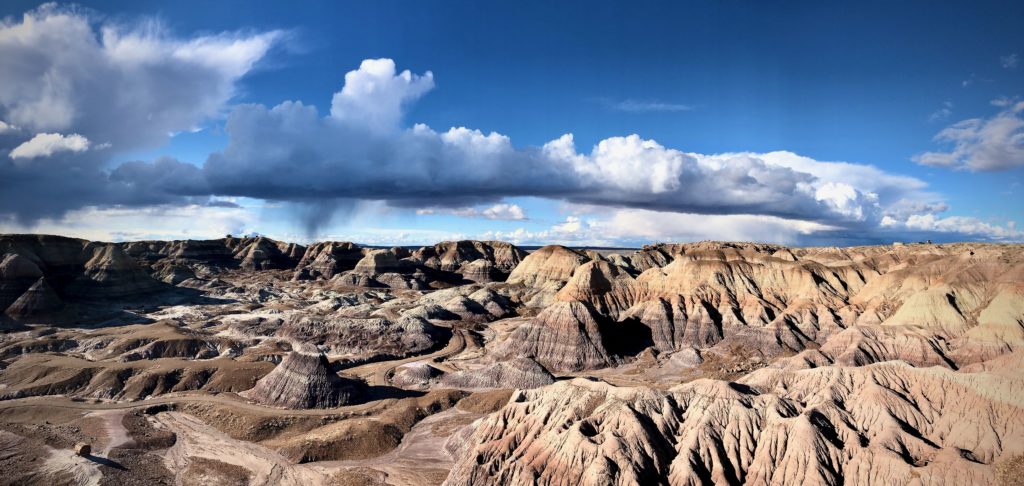
The road from the I-40 northern access point to the Petrified Forest National Park visitor’s center is closed after Blue Mesa until at least April 1, so I could only tour the upper half of the park. This 17 mile route includes stops at The TePees, Newspaper Rock, Puerco Pueblo and the Painted Desert Inn as well as awesome lookout points (Lacey, Whipple, Nizhoni, Pintado, Chinde, Kachina, Tawa and Tiponi) along the way. NOTE: The entire park is closed as of March 24, 2020, until further notice, due to COVID-19.
QUESTIONS OR COMMENTS?
First, thank you for reading this newsletter. If you have any questions about anything that appears here, please do not hesitate to contact me directly via email at: hello@wheresthefunny.blog.
PREVIOUS NEWSLETTERS
- Where’s the Funny? Volume 1 (November 2019)
- Where’s the Funny? Volume 2 (December 2019)
- Where’s the Funny? Volume 3 (January 2020)
- Where’s the Funny? Volume 4 (February 2020)


